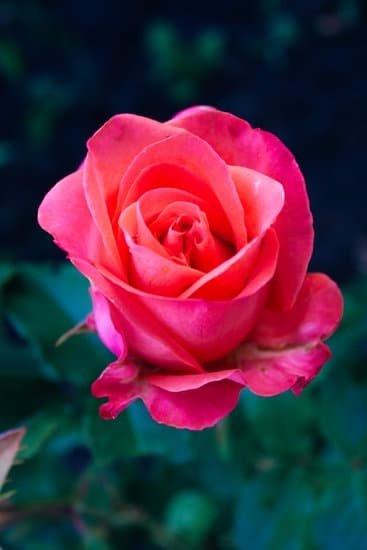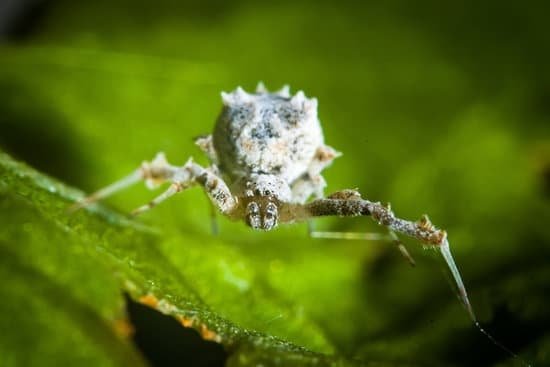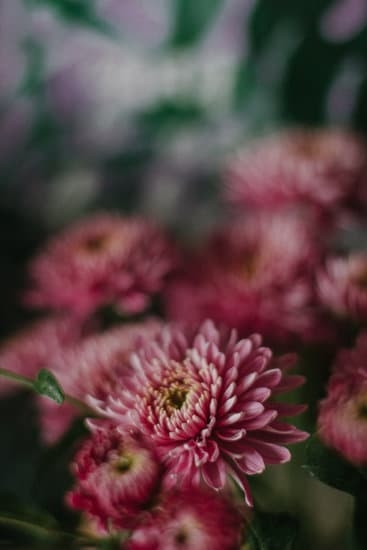Are you looking for new and exciting home gardening ideas to start your own backyard oasis? Home gardening is a wonderful hobby that not only allows you to be creative and productive but also has numerous benefits for both your physical and mental well-being.
In this article, we will explore the different aspects of home gardening, including choosing the right location, essential tools and supplies, designing your garden layout, growing vegetables and herbs, soil preparation and fertilization, maintenance and care, as well as creative ideas for small spaces.
Starting a home garden is a fulfilling hobby that can bring immense joy and satisfaction. Whether you’re looking to grow your own food or simply create a beautiful outdoor space, home gardening offers a range of benefits. Not only does it provide an opportunity to connect with nature and enjoy fresh produce, but it also serves as a form of exercise and relaxation. Additionally, studies have shown that gardening can reduce stress levels and improve overall well-being.
In the following sections, we will delve into the practical aspects of home gardening, such as choosing the right location for your garden, selecting the essential tools and supplies needed, planning an effective garden layout, growing the best vegetables and herbs suited for your area, preparing the soil for optimal growth, as well as maintaining and caring for your garden.
Whether you’re a beginner or seasoned gardener, there are plenty of tips and ideas to help you create a thriving home garden.
So let’s get started on this green-fingered journey.
Choosing the Right Location for Your Home Garden
When it comes to home gardening, one of the most important factors to consider is choosing the right location for your garden. The success of your garden largely depends on its location, as different plants have different sunlight and soil requirements. Here are some key considerations for choosing the right location for your home garden:
Sunlight
Most vegetables and herbs require at least 6-8 hours of direct sunlight per day. When selecting a location for your garden, consider areas in your yard that receives ample sunlight throughout the day. Avoid placing your garden in the shadow of buildings or large trees that may obstruct sunlight.
Soil Quality
The quality of the soil is crucial for the health and growth of your plants. Before starting your home garden, test the soil in potential locations to determine its pH level and nutrient content. Additionally, make sure that the soil has good drainage to prevent waterlogging, which can be detrimental to plant growth.
Accessibility
Choose a location for your home garden that is easily accessible for watering, weeding, and harvesting. Consider proximity to a water source and make sure that it’s convenient for you to tend to your garden regularly.
By carefully considering these factors when choosing the right location for your home garden, you can set yourself up for success and ensure a bountiful harvest of fresh produce and herbs right from your own backyard. These considerations will help you create an ideal environment for growing healthy plants and enjoying all the benefits of home gardening ideas.
Essential Tools and Supplies for Home Gardening
When it comes to home gardening, having the right tools and supplies is essential for the success of your garden. Whether you are a beginner or an experienced gardener, there are a few basic items that you will need to have on hand to ensure that your plants thrive. Some of the essential tools for home gardening include a trowel, shovel, pruners, watering can or hose, gloves, and a wheelbarrow for transporting heavy materials.
In addition to tools, it’s important to have the right supplies for your home garden. This includes items such as potting soil, compost, fertilizer, mulch, and seeds or seedlings for your chosen plants. It’s also a good idea to invest in some pest control products and organic insecticides to protect your garden from unwanted visitors.
Having these essential tools and supplies will make it easier for you to take care of your home garden and ensure that your plants are healthy and thriving. With the right equipment at your disposal, you’ll be well-equipped to tackle any challenges that may arise in your gardening journey.
| Essential Tools | Supplies |
|---|---|
| trowel | potting soil |
| shovel | compost |
| pruners | fertilizer |
Planning and Designing Your Home Garden Layout
When it comes to planning and designing your home garden layout, there are a few key factors to consider. One of the first things to think about is what you want to grow in your garden. Are you interested in growing a variety of vegetables, or do you prefer a garden filled with colorful flowers and herbs? Once you have a clear idea of what you want to grow, you can start thinking about the layout of your garden.
Consider Your Space
The next step in planning your home garden layout is to consider the space that you have available. If you have a small yard or limited outdoor space, you may need to get creative with how you arrange your garden beds. Vertical gardening, for example, allows you to grow plants upwards instead of outwards, making it ideal for small spaces.
Think About Accessibility
Accessibility is another important factor when it comes to designing your home garden layout. You’ll want to make sure that your garden is easily accessible for planting, weeding, and harvesting. Consider leaving enough space between each row or bed so that you can comfortably move around without stepping on your plants.
Create Paths and Borders
Finally, consider creating paths and borders within your garden layout. Not only do these features add visual interest to your garden, but they also help define different areas within the space. Use materials like gravel, brick, or wood to create defined pathways and borders that separate different sections of your garden.
By carefully considering these factors and implementing creative and practical home gardening ideas for small spaces, you can create a well-designed home garden that suits both your needs and the available space.
Best Vegetables and Herbs to Grow in Your Home Garden
When it comes to home gardening, choosing the right vegetables and herbs to grow is essential for a successful and rewarding experience. Whether you’re a beginner or an experienced gardener, there are plenty of options to consider when planning your home garden.
One of the best vegetables to grow in your home garden is tomatoes. They are relatively easy to grow and can be used in a variety of dishes. Additionally, they come in different varieties such as cherry tomatoes, beefsteak tomatoes, and heirloom tomatoes, giving you plenty of options to choose from.
Another popular choice for home gardens is lettuce. Lettuce is a versatile vegetable that can be grown in containers or directly in the ground. It’s also a fast-growing crop, allowing you to enjoy fresh salads throughout the growing season.
For herb enthusiasts, basil is a must-have in any home garden. This aromatic herb is not only easy to grow but also adds incredible flavor to various recipes. Other popular herbs for home gardening include mint, rosemary, and thyme.
| Vegetables/Herbs | Growing Tips |
|---|---|
| Tomatoes | Requires full sun; stake or cage for support; regular watering |
| Lettuce | Can be grown in partial shade; keep soil consistently moist; protect from pests |
| Basil | Thrives in well-drained soil; needs at least 6 hours of sunlight per day; regular harvesting encourages growth |
Tips for Proper Soil Preparation and Fertilization
When it comes to home gardening ideas, proper soil preparation and fertilization are essential for the success of your garden. Without the right nutrients in the soil, your plants may struggle to grow and produce a healthy yield. Here are some tips for preparing your soil and providing the necessary fertilization for your home garden:
1. Test Your Soil: Before you start planting, it’s important to know the pH level and nutrient content of your soil. You can purchase a soil testing kit at your local garden center or send a sample to a professional lab for analysis. This will help you understand which nutrients your soil may be lacking and what adjustments need to be made.
2. Add Organic Matter: Incorporating organic matter such as compost, manure, or shredded leaves into your soil can improve its structure and fertility. Organic matter helps to improve drainage, retain moisture, and provide essential nutrients for plant growth.
3. Choose the Right Fertilizer: Based on the results of your soil test, choose a fertilizer that will supplement any missing nutrients in your soil. There are different types of fertilizers available, including slow-release granular fertilizers, liquid fertilizers, and organic options such as fish emulsion or seaweed extract.
By following these tips for proper soil preparation and fertilization, you can create a healthy foundation for your home garden to thrive. Taking the time to prepare and nourish your soil will lead to stronger, more productive plants and a bountiful harvest from your home garden.
Maintaining and Caring for Your Home Garden
Once you have established your home garden, it is crucial to maintain and care for it properly to ensure a bountiful harvest. This involves regular watering, weeding, and pest control measures. Here are some essential tips to help you keep your home garden in top condition:
1. Watering: Proper watering is essential for the health of your plants. Different plants have different water requirements, so be sure to research the specific needs of the vegetables and herbs you are growing in your home garden. In general, most plants require about 1 inch of water per week. Consider investing in a drip irrigation system or soaker hoses to ensure that your plants receive consistent and adequate moisture.
2. Weeding: Weeds can compete with your plants for nutrients and water, so it’s important to keep them under control. Regularly inspect your garden for any unwanted growth and pull them out by hand or use a hoe to remove them. Applying mulch around your plants can also help suppress weed growth.
3. Pest Control: Pests such as aphids, caterpillars, and slugs can wreak havoc on your home garden if left unchecked. Consider using natural methods like companion planting, introducing beneficial insects, or using organic pesticides to keep pest populations in check without harming beneficial organisms in the soil.
By following these simple but effective maintenance practices, you can ensure that your home garden thrives and provides you with a plentiful harvest of fresh produce throughout the growing season.
Now that you have learned about maintaining and caring for your home garden with proper watering, weeding, and pest control measures, make sure to check out our next section on Creative and Practical Home Gardening Ideas for Small Spaces.
Creative and Practical Home Gardening Ideas for Small Spaces
In conclusion, home gardening is not only a rewarding hobby but also a great way to produce your own food and connect with nature. Whether you have a large backyard or just a small balcony, there are plenty of creative and practical home gardening ideas that can help you make the most out of your space.
One of the best home gardening ideas for small spaces is vertical gardening. By utilizing vertical space with hanging planters, trellises, or wall-mounted containers, you can maximize the amount of plants you can grow even in limited square footage. This not only saves space but also adds a beautiful aesthetic to your outdoor area.
Additionally, consider using multi-functional furniture if you have limited outdoor space. You can find benches with built-in planters or tables with space for potted herbs. This not only helps in creating an attractive garden but also provides functional seating or dining options for your outdoor area.
Lastly, think outside the box when it comes to containers for your home garden. Get creative and repurpose everyday items like tin cans, wooden crates, or even old rain boots as unique planters. This not only adds a touch of personality to your garden but also allows you to reuse items that might otherwise end up in the landfill.
With these creative and practical home gardening ideas for small spaces, anyone can enjoy the benefits of growing their own fruits, vegetables, and herbs no matter how limited their outdoor area may be. Remember that with some ingenuity and resourcefulness, any space can become a thriving home garden.
Frequently Asked Questions
What Is a Good Layout for a Vegetable Garden?
A good layout for a vegetable garden is one that maximizes sunlight, provides easy access for watering and weeding, and allows for efficient use of space. Consider planting in rows or raised beds to keep things organized.
What Is the Easiest Thing to Grow in Your Garden?
The easiest thing to grow in your garden will depend on your location and climate, but generally speaking, herbs like basil, mint, and rosemary are relatively low-maintenance and can thrive with minimal care.
How Do You Plan a Garden for Beginners?
Planning a garden for beginners involves considering the available space, sunlight exposure, and soil quality. Start small and choose easy-to-grow plants like lettuce, tomatoes, and peppers. Researching each plant’s specific needs is crucial for success.

Welcome to my gardening blog! I am passionate about plants and enjoy sharing my knowledge and experiences with others. In this blog, I will write about everything related to gardening, from tips on how to get started to updates on my own garden projects.





